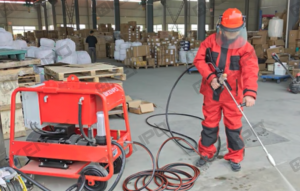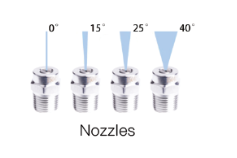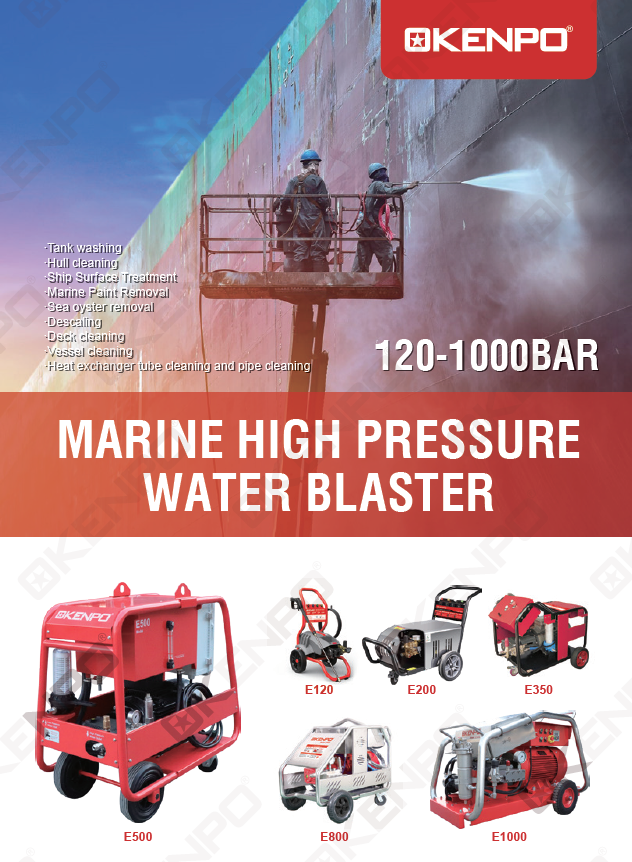When it comes to the upkeep of vessels and ensuring cleanliness on ships, Marine High Pressure Washers serve as essential tools. These robust machines are capable of effectively eliminating stubborn dirt, algae, and grime from a range of surfaces. However, the operation of a high pressure washer necessitates caution and expertise to guarantee safety for both the operator and the equipment. This article delves into crucial safety guidelines and best practices for the effective operation of marine high pressure washers.
Understanding Marine High Pressure Washers
Marine high pressure washers, including models such as the KENPO E500, are engineered to produce high-pressure water jets, making them ideal for various cleaning tasks, such as hull cleaning, cargo hold sanitization, and surface preparation. With pressures that can reach up to 500 bar and flow rates of 18 L/min, these machines efficiently handle demanding cleaning jobs.
Key Features of Marine High Pressure Washers
High Pressure Output: Each model provides significant pressure, which is vital for effective cleaning.
Durable Construction: Constructed from non-corrosive materials, these washers are designed to endure the harsh conditions of the marine environment.
Versatile Applications: They can clean a variety of surfaces, including metal, concrete, wood, and fiberglass, depending on the nozzle utilized.
User-Friendly Design: Features such as adjustable pressure settings and quick connection nozzles improve usability.
Click the link below to watch the video: KENPO Marine High Pressure Water Blasters
Safety Precautions Prior to Operation
1. Utilize Suitable Personal Protective Equipment (PPE)
Before using a high-pressure washer, it is essential to wear the appropriate High-Pressure Protective Suit. This should consist of:
Waterproof Gloves: Safeguards your hands against high-pressure water and chemicals.
Safety Goggles: Protects your eyes from debris and water spray.
Non-Slip Footwear: Provides stable footing on slippery surfaces.
Hearing Protection: If the machine operates at elevated decibel levels, ear protection is advisable.
2. Examine the Equipment
Before initiating the machine, perform a comprehensive inspection:
Inspect Hoses and Connections: Look for any indications of wear, cracks, or leaks. Any damaged hoses must be replaced without delay.
Check the Nozzles: Ensure they are clean and functioning correctly. Using an incorrect nozzle may result in ineffective cleaning or damage to the equipment.
Assess Power Supply: Confirm that the power source aligns with the washer’s specifications (e.g., 220V, 440V).
3. Review Operating Instructions
Acquaint yourself with the manufacturer’s manual, which encompasses:
Operating Procedures: Understand the correct methods for starting and stopping the machine.
Pressure Settings: Be knowledgeable about how to adjust the pressure according to the cleaning task.
Safety Features: Be informed about emergency shut-off mechanisms and safety locks.
Safe Operating Procedures
1. Set Up in a Safe Area
Select a location that is:
Flat and Stable: This ensures that the machine remains upright during operation.
Free of Obstacles: This minimizes the risk of tripping or accidents.
Well-Ventilated: If using electric models, ensure they are positioned away from water sources to prevent electrical hazards.
2. Maintain a Safe Distance
While operating the machine, maintain a safe distance from the surface being cleaned. The recommended distance varies based on the pressure setting:
For Higher Pressures: Keep a distance of at least 2-3 feet to prevent damage to the surface.
For Lower Pressures: You may approach closer, but always evaluate the condition of the surface.
3. Use the Right Nozzle and Angle
Different cleaning tasks necessitate different nozzles. For instance:
0° Nozzle: Generates a concentrated jet for stubborn stains but may damage surfaces if used too closely.
15° Nozzle: Appropriate for heavy-duty cleaning tasks.
25° Nozzle: Perfect for general cleaning purposes.
40° Nozzle: Most suitable for delicate surfaces.
Always hold the nozzle at the correct angle to ensure effective cleaning without inflicting damage.
4. Control the Trigger
Start Slowly: When initiating the washer, pull the trigger slowly to gradually increase pressure.
Release When Not in Use: Always release the trigger when relocating or adjusting the machine to prevent accidental spraying.
5. Manage Water Flow
Use a Low-Pressure Suction Joint: This facilitates safe operation when utilizing cleaning agents or detergents.
Monitor Water Supply: Verify that there is a steady water supply to avoid the pump running dry.
Post-Operation Safety
1. Disconnect and Clean Up
After use:
Turn Off the Machine: Always power down the washer before detaching hoses.
Drain and Store Hoses: Make sure all water is expelled from hoses to prevent freezing and damage.
Clean the Nozzles: Eliminate any debris or buildup to ensure they are prepared for the next use.
2. Store Properly
Keep in a Dry Place: Store the machine in a protected area to shield it from the elements.
Secure All Components: Ensure all attachments and accessories are kept together to prevent loss.
Conclusion
Operating a Marine High Pressure Washer can significantly improve cleaning efficiency, but it entails responsibilities. By following safety precautions and best practices, operators can guarantee their safety and the durability of the equipment. For professional-grade cleaning solutions, consider obtaining your equipment from reputable suppliers like ChutuoMarine, a reliable ship wholesaler and ship chandler recognized by IMPA. For inquiries, reach out to ChutuoMarine at marketing@chutuomarine.com. Prioritizing safety ensures that cleaning operations are both efficient and effective, contributing to the overall maintenance and safety of maritime vessels.
Post time: Jul-31-2025









